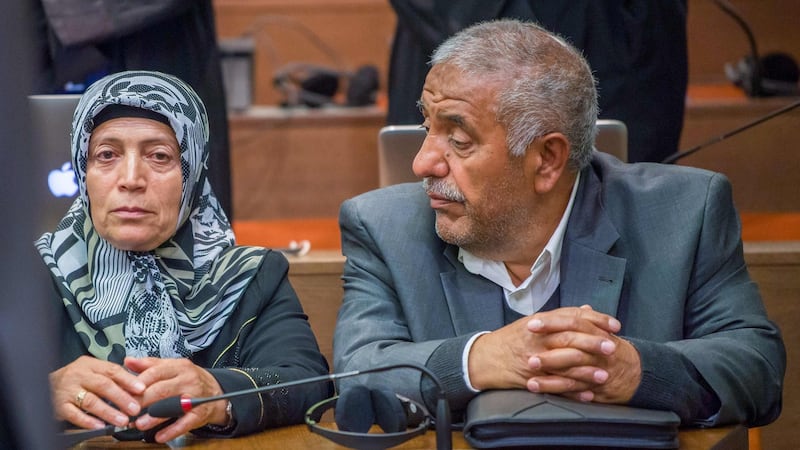Amid sobs and applause, a Munich court sentenced a neo-Nazi gang member on Tuesday to life in prison on 10 counts of murder and 34 counts of attempted murder.
After five years and 437 trial days, Beate Zschäpe (43) showed no emotion at the verdict, ending one of post-war Germany’s most staggering – and troubling – court cases.
Some 20 years ago the unemployed eastern German gardener and two male friends founded a neo-Nazi organisation they called the National Socialist Underground (NSU). Over 11 years, the two men shot dead eight Turkish and one Greek immigrant as well as a police woman. In addition they detonated at least one nail bomb in a xenophobic terror campaign financed by bank robberies and a shadowy supporter network.

Zschäpe is the only survivor of the trio and prosecutors were unable to link her directly to the attacks. However, presiding Judge Manfred Götzl said “complicity requires neither involvement in the core activity itself nor presence at the crime scene” and that the defendant had a “considerable and indispensable” role in the NSU.
“Your role was, compared to that of the two men, not of subordinate nature,” he said.
Her lawyers said they would appeal a verdict that they said “appeared to have been fixed for some time”. Four men also on trial – one with a tattoo reading “Die Jew, Die” – were given sentences of between two and 10 years for conspiracy and for supporting a terrorist organisation.
Police incompetence
The NSU fell apart on November 4th, 2011, when Uwe Böhnhardt and Uwe Mundlos took their own lives to avoid arrest following a botched bank robbery. Learning of their deaths, Zschäpe set fire to her safe house and handed herself in to police.
The subsequent NSU investigation exposed staggering police incompetence and a pattern of institutional racism. Despite significant undercover work, investigators claimed they knew nothing of the existence of the NSU terrorist organisation until November 2011.
Although the two men used the same gun in all the shootings, investigators claimed not to realise until after Zschäpe’s confession that they were dealing with a series of linked murders.
An only child, Zschäpe grew up with her alcoholic single mother in a high rise development outside the university town of Jena in the eastern state of Thuringia. As a teenager she found an ersatz family in a local neo-Nazi gang, headed by her future skinhead boyfriend, Mundlos.
She left school early and moved in with him and Böhnhardt and by 1995 they were key members of a a hardcore neo-Nazi gang specialising in petty crime and provocation. They defiled concentration camps, dangled dummies marked “Jew” from Autobahn bridges and sent mock-up bombs to police.
After police raided an NSU depot containing weapons and explosives in December 1998, the trio went off the grid. Their first murder came two years later, on September 9th, 2000: the shooting of Nuremberg flower shop owner Enver Simsek.
The two men took pictures of the dying man, lying in a pool of his own blood, and – alongside pictures of their other victims – created a ghoulish DVD slideshow that Zschäpe posted to media organisations. Apart from two killings – of a Greek man and a German police woman – all victims were migrants of Turkish origin.
‘Skilful liar’
In written testimony, Zschäpe told the court she “flipped out” when she heard of the first murder and urged the two to hand themselves in. Her defence – she had five lawyers in five years – portrayed her as a fearful victim of emotional blackmail. In a statement to court last week, she asked judges not to sentence her for crimes she “neither wanted nor did”.
In sentencing her to life imprisonment, with no chance of early release, the court followed the prosecution and its portrayal of Zschäpe, who lived under eleven different aliases, as a “skilful liar”.
Her refusal to testify means families of the victims still don’t know why their loved ones were selected to be killed. The legacy of the NSU trial, they say, is a pattern of institutional racism among police who classified the murders as clan crime.
Abdulkerim Simsek says his flower-shop owner father, the NSU’s first murder victim, was portrayed by police as a criminal, and his family as co-conspirators or even perpetrators. “They searched our entire apartment, the newspapers said my father was a drug dealer because he went to Holland every week to buy flowers,” he said.
Their lawyers believe investigators have worked to conceal the scale of the NSU supporter and sympathiser network in a bid to keep under wraps the extent of contact between the neo-Nazis and police informers.
One special security agent conceded he was in an internet cafe in April 2006 when the 21-year-old owner was shot dead by the NSU. Chatting online with his mistress in the café’s back room, he claimed neither to have heard the shots nor seen the dead body.




















